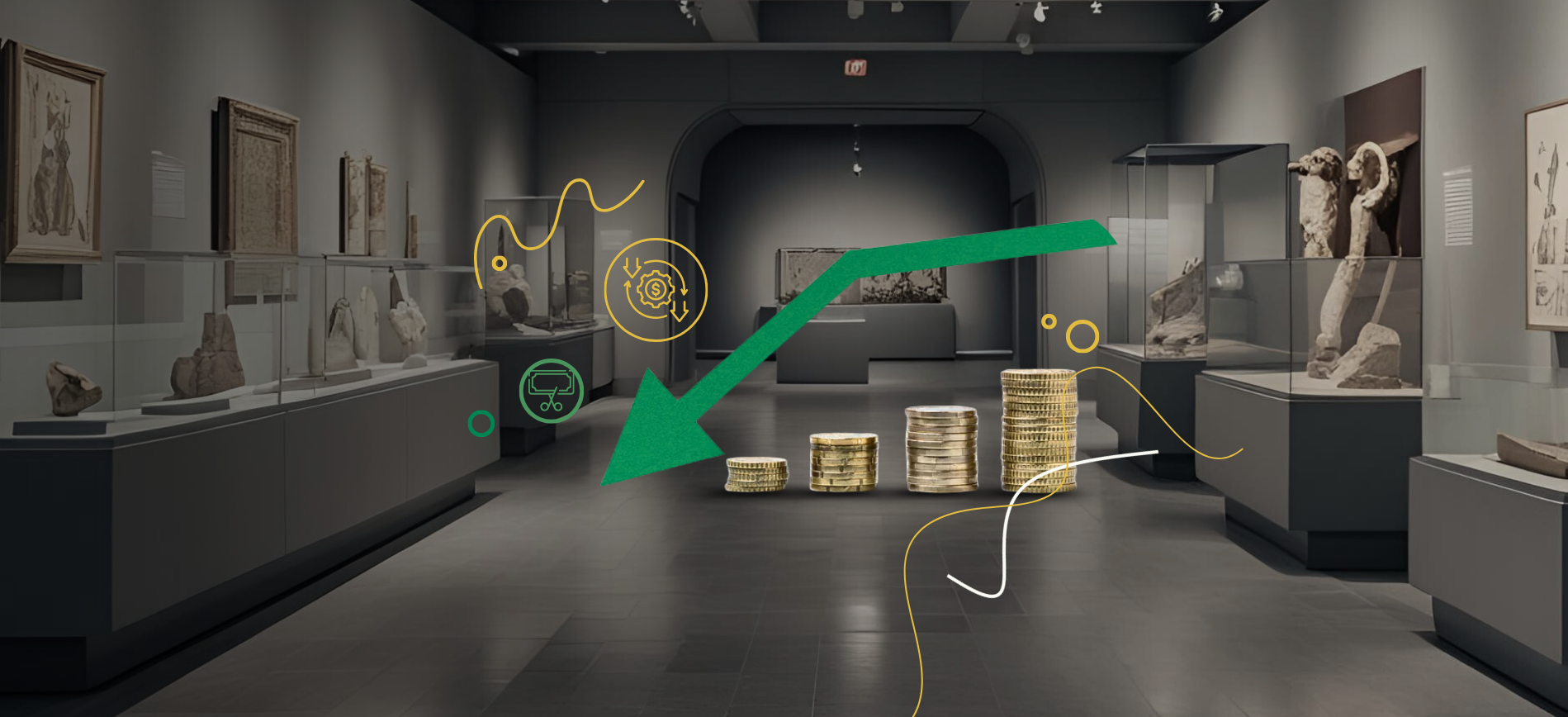Transforming Cultural Institutions Through Unified Technology
Converged Commerce Solutions for Museums
Museums face an increasingly complex operational landscape where managing disparate systems across ticketing, retail, memberships, and fundraising creates inefficiencies that hinder both visitor experiences and financial sustainability. The solution lies in converged commerce — a unified technology approach that integrates all museum operations into a single, seamless platform. As a pillar strategy for modern cultural institutions, converged commerce represents the evolution from fragmented, siloed systems to cohesive digital ecosystems that drive operational excellence and enhanced visitor engagement.
How The Assistant Manager Serves Museums
The Assistant Manager (TAM) provides specialized converged commerce solutions tailored specifically for museum operations. TAM's comprehensive platform addresses the unique challenges faced by cultural institutions by connecting every aspect of museum operations — from admissions and memberships to gift shop sales and donor engagement — within a single, unified system.
TAM's museum-specific offerings include streamlined admissions and ticketing capabilities that enable both online and on-site ticketing with flexible pricing and access control. The platform facilitates fast check-in and validation through mobile scanning, kiosks, or turnstiles, while providing live attendance monitoring to track visitor flow and analyze peak hours for data-driven decision making. The solution operates with reliable offline mode functionality, ensuring museums can continue operations even without internet connectivity.
For membership and development operations, TAM integrates membership sales and renewals with donor management systems, creating a comprehensive view of supporter engagement. The platform's retail and gift shop functionality provides real-time inventory tracking, point-of-sale capabilities, and seamless integration with membership benefits and special promotions. This unified approach eliminates the traditional disconnection between different museum departments, creating operational synergy that enhances both efficiency and visitor experience.
The Challenge: Museum Operational Fragmentation
Modern museums operate in what researchers describe as a "content silo trap," where different departments use separate systems that create walls between content domains and operational functions. The typical medium to large museum manages collections, archives, and libraries with three different software solutions, while donor information resides in separate databases — often multiple ones — preventing institutions from recognizing that an artist in their collection might also be a significant donor.
This fragmentation extends beyond just software systems. Museums face mounting operational challenges including decreased funding, bureaucratic delays, lack of digital innovation, and an overall absence of data culture and strategic data management. The COVID-19 pandemic exposed the precarious nature of this fragmented approach, revealing that 87% of museums had only 12 months or less of financial operating reserves, with 56% operating with less than six months of backup funds.
Data silos create five critical problems for museums: duplicate data copies that skew sampling efforts and waste storage space; inconsistent search capabilities across different systems; limited analytical insights due to fragmented data; increased operational complexity; and missed opportunities for cross-departmental collaboration. These inefficiencies manifest in real-world consequences — staff spending hours manually reconciling data between systems, missed revenue opportunities from disconnected customer touchpoints, and frustrated visitors encountering inconsistent experiences across different museum services.
Research indicates that museums with fragmented systems experience "task saturation," where staff members feel overwhelmed with more responsibilities than time and resources allow. This operational stress contributes to staff burnout and turnover, further exacerbating institutional knowledge loss and operational inefficiencies.

The Converged Commerce Solution for Museums
Converged commerce represents a transformative approach that breaks down operational silos by integrating all customer-facing sales channels, critical data, and supporting management systems through scalable infrastructure. For museums, this means creating a unified ecosystem where ticketing, retail, memberships, donations, and visitor services operate from a single data store with total visibility across all operations.
The unified commerce model enables museums to make informed decisions, improve operational efficiencies, and better serve visitors through real-time data synchronization. Unlike traditional omnichannel approaches that merely connect different systems, converged commerce creates a truly integrated platform where changes in one area automatically update across all connected systems.
Enhanced Visitor Experience
Converged commerce solutions enable museums to deliver personalized, seamless visitor experiences from pre-visit planning through post-visit engagement.
The unified platform allows for comprehensive visitor journey optimization, where pre-visit services can be accessed online through content and applications, while onsite-visit services utilize multiple digital channels including interactive kiosks and mobile learning platforms.
Museums implementing converged commerce can offer dynamic pricing strategies for special exhibitions and peak times, maximizing revenue while maintaining accessibility. The integrated approach enables real-time inventory synchronization between physical and online stores, preventing inconsistencies in stock and pricing that frustrate visitors.
Operational Efficiency Gains
Research demonstrates that unified commerce platforms significantly reduce manual workload through automation of previously disconnected processes. Museums benefit from centralized inventory management across multiple locations, automated membership renewals, and integrated reporting that eliminates the need for manual data compilation from disparate systems.
The unified approach enables museums to implement mobile point-of-sale solutions that can process payments, print tickets, and redeem gift cards seamlessly, reducing queue times and improving visitor satisfaction. Staff can access comprehensive customer profiles showing purchase history across all touchpoints, enabling personalized service recommendations and fostering customer loyalty.
Financial Impact and Revenue Optimization
Converged commerce platforms enable museums to diversify revenue streams more effectively by creating integrated pathways between different revenue-generating activities. The unified data view allows for sophisticated analytics that identify cross-selling opportunities — for example, targeting exhibition visitors with relevant merchandise or membership upgrades based on their visit patterns and preferences.
Museums utilizing integrated platforms report significant cost savings through reduced redundancy and improved resource allocation. The elimination of duplicate data entry, streamlined reconciliation processes, and automated reporting contribute to operational cost reductions that can be redirected toward mission-critical activities.
Dynamic pricing capabilities enabled by converged commerce platforms allow museums to optimize revenue based on demand patterns, visitor demographics, and seasonal trends. The integrated approach facilitates bundling of different services — combining admissions with retail products, dining experiences, or special events — creating higher-value visitor experiences while increasing average transaction values.
Data-Driven Decision Making
Unified commerce platforms provide museums with unprecedented access to integrated analytics that inform strategic decision-making. The comprehensive data view enables institutions to understand visitor behavior patterns across all touchpoints, identifying trends that inform exhibition planning, retail strategy, and operational optimization.
Research indicates that museums implementing integrated data management systems experience improved decision-making capabilities through access to real-time metrics spanning visitor flow, sales performance, membership engagement, and operational efficiency. This data-driven approach enables proactive management strategies rather than reactive responses to operational challenges.
The unified platform approach allows museums to track the complete visitor lifecycle, from initial awareness through repeat visits, enabling sophisticated customer relationship management that builds long-term loyalty and support. This comprehensive understanding of visitor engagement patterns informs targeted marketing strategies and personalized outreach that increases both visitor satisfaction and institutional revenue.
Implementation Best Practices
Successful converged commerce implementation requires a strategic approach that prioritizes flexibility, configurability, and accessibility. Museums should begin with a comprehensive audit of existing systems and data flows to identify integration opportunities and potential challenges.
The implementation process should emphasize staff training and change management, as the transition from siloed operations to unified commerce represents a significant operational shift. Research suggests that successful implementations focus on demonstrating immediate value through quick wins — such as simplified reporting or automated processes — while building toward more comprehensive integration over time.
Museums should prioritize solutions that offer modular scalability, allowing for phased implementation that minimizes operational disruption. The chosen platform should support both current operational needs and future growth, with integration capabilities that enable connection with specialized museum systems for collections management or conservation tracking.

Future Outlook
The evolution toward converged commerce in museums represents part of a broader digital transformation that positions cultural institutions for sustainable growth in an increasingly connected world. As visitor expectations continue to evolve, museums implementing unified commerce platforms will be better positioned to deliver the seamless, personalized experiences that modern audiences demand.
Emerging technologies including artificial intelligence, IoT integration, and advanced analytics will further enhance the capabilities of converged commerce platforms, enabling predictive analytics for visitor management, automated environmental controls for collections preservation, and personalized recommendation systems that enhance both visitor satisfaction and revenue generation.
The converged commerce approach aligns with broader industry trends toward sustainable operations and mission-focused resource allocation. By eliminating operational inefficiencies and maximizing revenue optimization, unified platforms enable museums to redirect resources toward their core educational and cultural preservation missions while building financial resilience for long-term sustainability.
The future of museum operations lies in embracing converged commerce solutions that break down traditional silos, creating integrated ecosystems where technology serves both operational excellence and mission fulfillment. For cultural institutions seeking to thrive in an evolving landscape, the transition to unified commerce platforms represents not just an operational upgrade, but a strategic imperative for sustainable success.
Ready to implement a converged commerce approach for your museum? Book your discovery call today and discover how an integrated solution can help your museum today.

